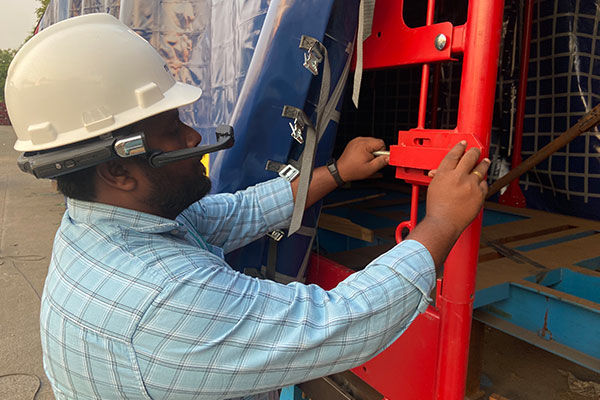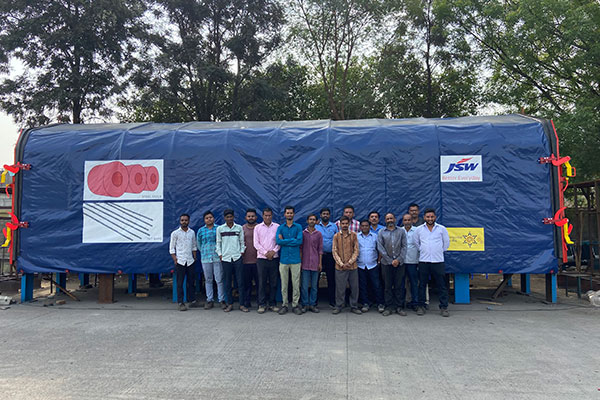Reality remains
One major advantage of AR glasses compared to VR glasses is that they don't simply block out the real world. You still perceive what is actually happening on site or elsewhere in this world. Similar to a camera connection between two objects in different locations. If you need certain images, graphics or other information, you can fade them in at the moment. AR technology is primarily used in development, maintenance, support, for example, for the visual representation of certain product details. The tarpaulin specialist Edscha TS, for example, is currently using AR technology from its German site in Moers to support the assembly of tarpaulin systems for the local railroads in India.
Very real digital
It is the complex application possibilities and yet simple operation that make AR technology so popular in the industrial sector. Communication takes place via AR glasses, special software programs on a computer and a lot of ideas and creativity. The camera and monitor are located directly on the glasses. In addition, the AR glasses are lightweight and unobtrusive to wear. An ideal work tool. In the early days (around 1968), the equipment had to be connected directly to a computer the size of a closet. Today, this is possible via cell phone, notebook, Bluetooth and WLAN.

Application diversity
In industry, AR applications are increasingly being used to support development, maintenance and services. Of course, this also applies to complex assemblies. AR glasses are also proving their versatility in the development of products. And AR systems have also proven their worth in the training of pilots or captains. AR systems function similarly in medicine, virtually everywhere where precision and information in detail are required. Thanks to AR, people work faster and more efficiently, with fewer errors and with traceable results. And, last but not least, it creates the conditions for ongoing improvements.
Perfect simulation
With AR applications, real "real" work processes can be perfectly tracked and corrected. Edscha TS uses this to present operating functions or maintenance or repair processes to customers of its soft top systems in a very practical and realistic way. And it does so worldwide. Thanks to the Internet and special AR applications, this works in very high quality. Although the Edscha TS engineers in Moers and their colleagues in India are sitting - virtually speaking - in the same office, there is still a distance of just over 7,000 kilometers (as the crow flies) between them. Corrections to the installation of the soft top can be made in a flash. Practical tips and tricks for maintenance, or how quickly and easily certain spare parts can be replaced, are provided via the same AR channel.

Many advantages
The Edscha TS - AR example shows quite clearly the advantages of using this technology. For example, the ability to work with it worldwide via the Internet saves a lot of time. One is quickly on it and on the same level. Current technical innovations can also be transmitted and discussed in a timely manner. This also applies to the planning and implementation of certain projects. Last but not least, it can be impressively presented how Edscha TS technology works and what the difference is to other systems.






